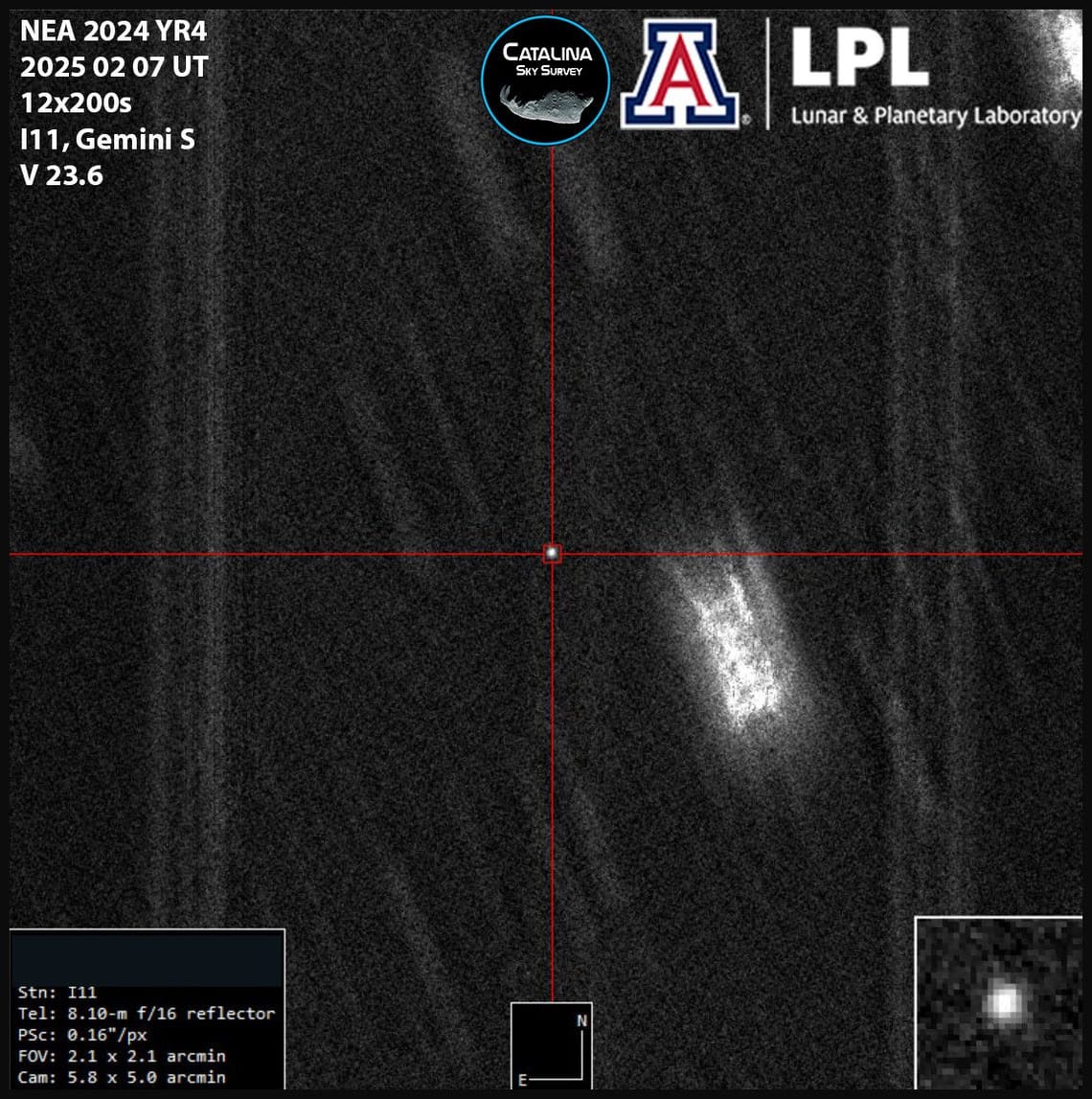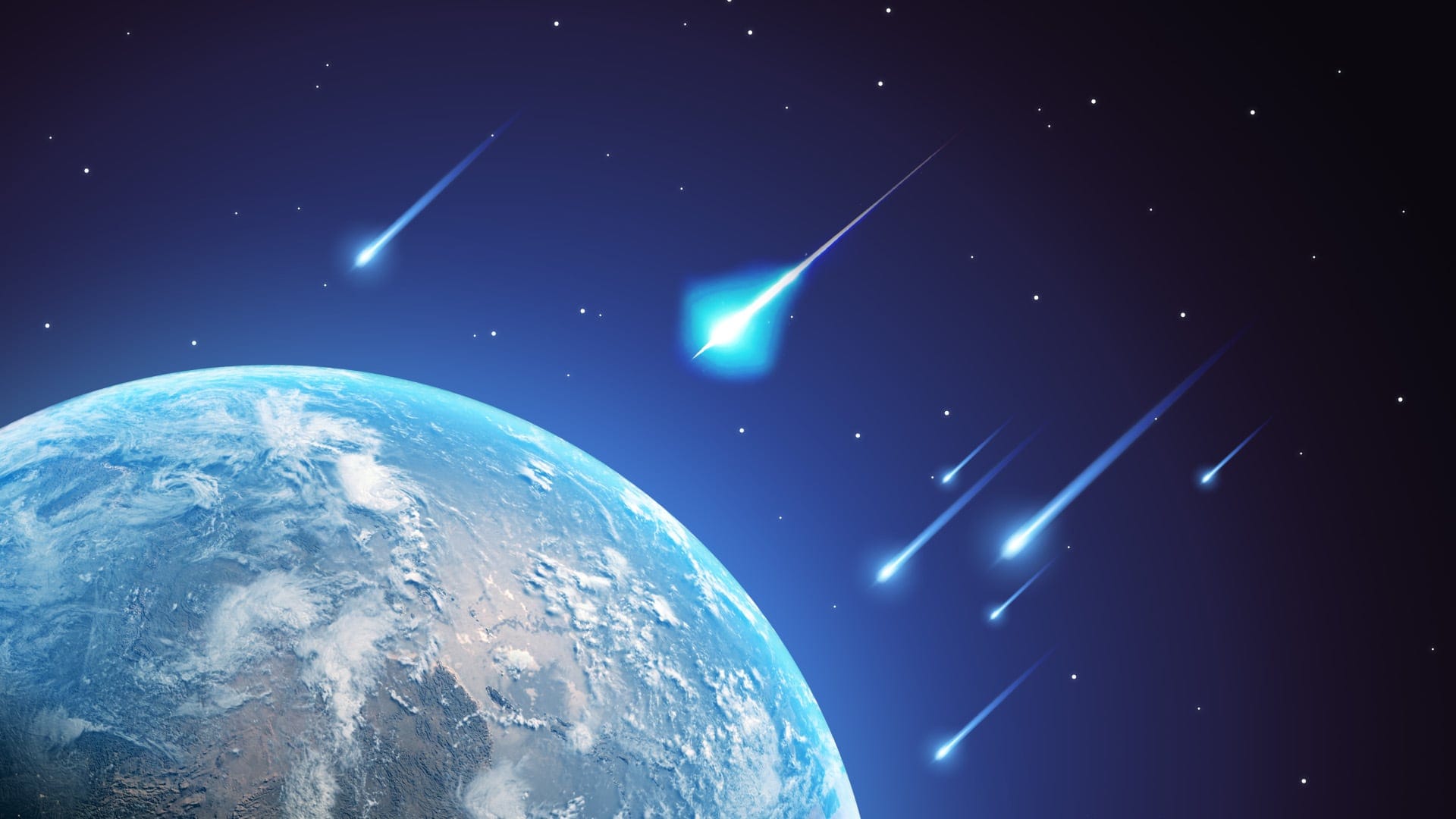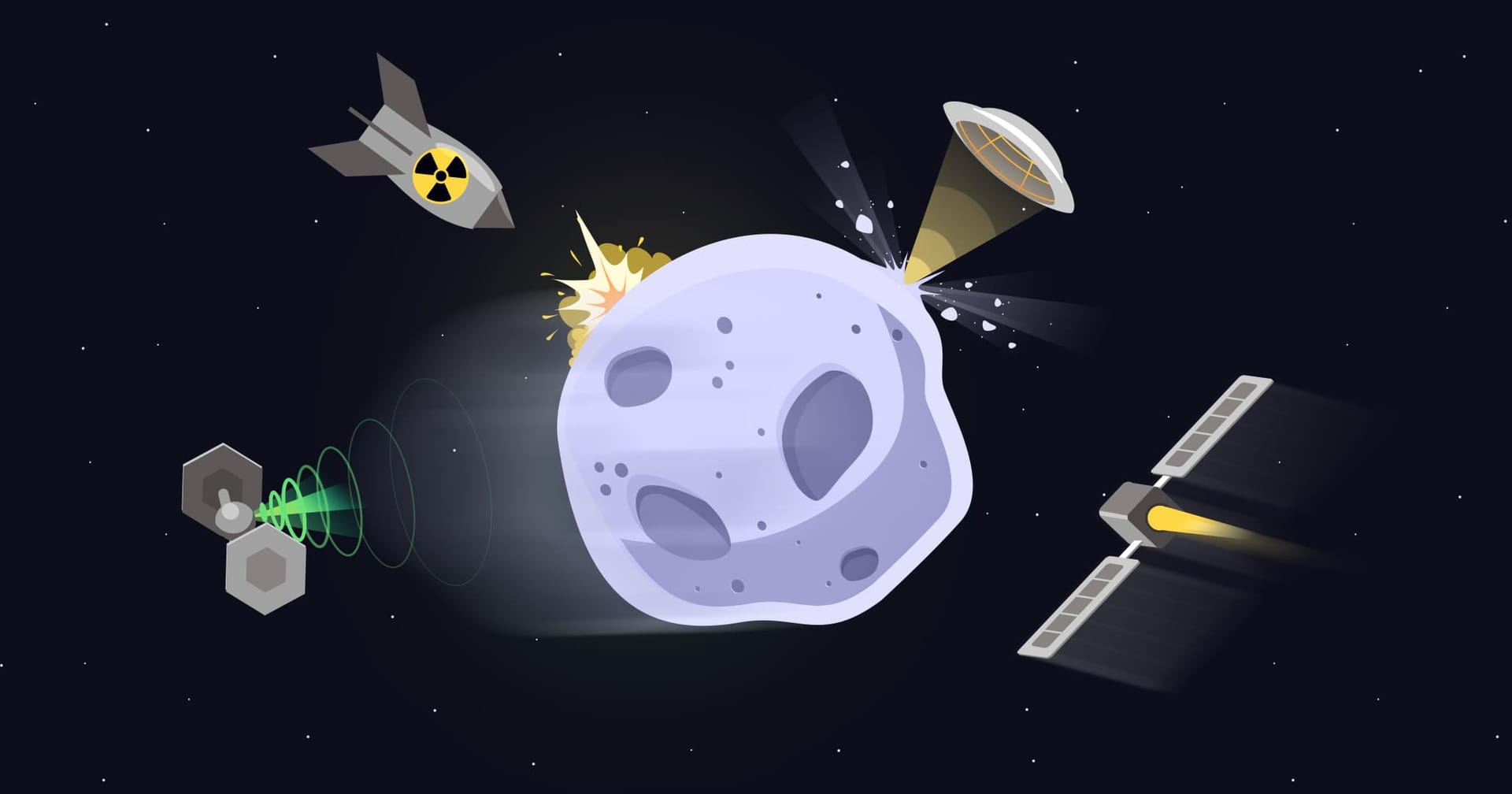Asteroid 2024 YR4: Will It Hit the Moon?
Some time ago, the news of asteroid 2024 YR4 predicted to hit Earth has been blasting the Internet. It has become one of the most dangerous near-Earth objects in the last 20 years. But as astronomers refined its orbit, the alarming Earth-impact odds quickly dropped – only for the chance of a collision with the Moon to rise unexpectedly. Let's see what is known about this asteroid so far, why it made us so nervous, and how likely it really is to hit the Moon. By the way, with the help of the Sky Tonight app, you can easily find out where it is flying now.
Contents
- What is asteroid 2024 YR4?
- Asteroid 2024 YR4 hitting the Moon: odds & possible effects
- Asteroid 2024 YR4 hitting Earth: odds & possible effects
- How could we defend against asteroid 2024 YR4?
- Asteroid 2024 YR4: what’s next?
- Asteroid 2024 YR4: to sum up
What is asteroid 2024 YR4?
Asteroid 2024 YR4 was discovered by the ATLAS telescope on December 27, 2024 – right after its close approach to Earth: two days earlier, the asteroid passed at a distance of 830,000 kilometers (about 2.15 times the distance to the Moon) from our planet. It completes an orbit around the Sun in about 4 years.

First calculations revealed that asteroid 2024 YR4 had an unusually high chance of impacting Earth during its approach on December 22, 2032. This alarming possibility quickly drew the attention of the scientific community.
How big is asteroid 2024 YR4?
Based on observations from NASA’s James Webb Space Telescope, asteroid 2024 YR4 is now estimated to be 53-67 meters in diameter, which is similar in size to the Leaning Tower of Pisa. It can also be compared with the Tunguska impactor – an estimated 50-meter asteroid that flattened 2,000 square kilometers of Siberian forest back in 1908.
How dangerous is asteroid 2024 YR4?
Upon discovery, asteroid 2024 YR4 scored 3 out of 10 points on the Torino scale, which means it was considered to have a 1% (or higher) chance of hitting the Earth in less than 10 years and causing local damage. This was a new record since Apophis, which had 4 points in 2004. The risk levels triggered the International Asteroid Warning Network (IAWN) to issue a Potential Asteroid Impact Notification to alert the public and space agencies about an asteroid’s potential to collide with Earth.
Additional tracking of its orbital path has significantly reduced the probability of an Earth impact to below the 1-in-1,000 threshold. This is the criterion for downgrading objects smaller than 100 meters to Torino Scale Level 0, indicating “No Hazard”. This means that, based on current calculations, 2024 YR4 poses no threat to Earth and requires no further concern for planetary defense.
Dangerous, but still not “potentially hazardous”
You might find it surprising that asteroid 2024 YR4, which remained on the list of the most dangerous asteroids for quite some time, was never classified as a “potentially hazardous asteroid”. How can that be? Well, it’s simply too small to qualify!
A “potentially hazardous asteroid” (PHA) is an official term used to describe an asteroid that:
- Has an absolute magnitude of 22.0 or less (which means its diameter is over 100-150 meters, depending on its reflectivity),
- And comes within 0.05 astronomical units of Earth (that’s about 19.5 times the distance to the Moon).
Asteroid 2024 YR4 has an absolute magnitude of 23.95, which corresponds to a size of less than 100 meters. This is considered too small to be a major concern. (Interestingly, an asteroid of this size could easily wipe out an entire city – but apparently, scientists have peculiar ideas of “potentially hazardous.”)
Asteroid 2024 YR4 hitting the Moon: odds & possible effects
While Earth is effectively safe, we have a small but non-zero probability of a unique Moon impact on December 22, 2032. Let’s see what the odds are and how dangerous it is for both the Moon and our planet.
What are the chances of the asteroid hitting the Moon?
After its 2025 observation campaign, NASA estimated this chance at 4.3%. ESA’s independent solution gives a similar figure of about 4%. These odds will stay frozen until the asteroid becomes observable again in mid-2028, when fresh data will narrow the uncertainty window.
What will happen if the asteroid hits the Moon?
- Moon’s orbit will remain the same. Some people worry that such a collision could alter the Moon’s orbit. In reality, the risk is zero – an impact from an asteroid this size wouldn’t have any measurable effect on the Moon’s path around Earth.
- The Moon will get a new crater. A collision could eject energy equivalent to 5–6.5 megatons of TNT, creating a crater roughly 1 kilometer across – a mere pothole compared to the Moon's largest crater, the South Pole-Aitken basin, which spans over 2,400 km in diameter.
- Observers on Earth will see something unusual. The impact would likely be visible from Earth, similarly to Shoemaker–Levy 9’s collision with Jupiter in 1994. Also, it would launch up to 99 million kilograms of lunar dust into space. Up to 10% of that debris could reach Earth within days, potentially producing a brief, but visually striking, lunar meteor shower. Check our infographic on meteor showers to learn how to capture this once-in-a-lifetime event.

Asteroid hitting the Moon: is it dangerous to Earth?
- As noted above, a lunar impact would likely send numerous pieces of debris into space. While none of them would be large enough to cause damage on Earth – most would burn up harmlessly in the atmosphere – scientists warn that such debris could pose a meaningful risk to satellites in low Earth orbit, significantly increasing meteoroid exposure for months after the impact.
- The collision wouldn’t endanger life on Earth, but it could threaten anyone on the Moon at the time. With NASA planning to land astronauts on the Moon in 2027 and launch further missions to build a lunar base, this is a genuine safety concern. Because the Moon has no atmosphere to burn up incoming objects, even fragments just tens of centimeters across could pose a serious hazard to astronauts, habitats, and other lunar infrastructure.
Monitoring space objects that could strike the Moon is important since humanity aims to establish a sustained presence there for many reasons – explored in detail in our special article on why we must return to the Moon.
Asteroid 2024 YR4 hitting Earth: odds & possible effects
Space agencies have ruled out any risk of asteroid 2024 YR4 hitting Earth in 2032, but note that there’s an extremely low-probability encounter in 2047. So what if 2024 YR4 ever did collide with our planet? Let’s explore the potential consequences of an asteroid impact of this size.
What happens if asteroid 2024 YR4 hits Earth?
The outcome of the impact can vary depending on three things:
- Size;
- Composition;
- Impact location.
Size: how big could the blast be?
According to recent measurements, asteroid 2024 YR4 is about 53–67 meters across; taking the mid-range (~55 m), the impact energy would be around 8 megatons of TNT. The resulting blast could be 16 times stronger than the Chelyabinsk event, when the shockwave blew out windows in 7,000 buildings, and 1,500 people were injured. Check our infographics about dangerous asteroids to further explore the connection between an asteroid’s size and the possible impact effects.

Composition: will it explode or make a crater?
- If asteroid 2024 YR4 is made of rock, it might blow up in the sky, causing a big explosion and a fireball that hits the ground.
- If it’s composed of iron, it would pass through the atmosphere with ease and hit the ground, creating a crater up to 20 times its size. As the asteroid is estimated to be about 55 meters in size, it could form a crater a kilometer wide.
Impact zones: what’s at risk?
- One of the most likely impact scenarios involves the asteroid falling into the ocean (Pacific, Atlantic, or Arabian Sea). A shallow-water impact could trigger a tsunami tens of meters high, severely affecting coastal cities. A deep-ocean impact would generate smaller waves but could still disrupt global shipping.
- If the impact affects an urban area (a major city such as Mumbai, Lagos, or Bogota), the shockwave would likely demolish buildings within a 10-30 kilometer radius, resulting in hundreds of thousands to millions of casualties in densely populated regions.
- If it lands far from the big cities, the environmental impact would still be significant. The explosion could trigger forest fires, and shockwaves would be felt hundreds of kilometers away.
As you can see, asteroid 2024 YR4 wouldn’t pose a mass-extinction-level threat in either case. However, local damage would be devastating.
What are the chances of asteroid 2024 YR4 hitting Earth?
For the first two months after its discovery, the risk of asteroid 2024 YR4 impacting Earth kept increasing, rising from 0.99% to a striking 3%. That doesn’t seem like much, but usually, risks are much smaller than that: most near-Earth asteroids have impact probabilities in the range of 0.00001% or less. In fact, 2024 YR4 briefly held the highest recorded impact probability for an asteroid of its size or larger.
Fortunately, updated calculations have significantly reduced the risk. NASA’s and ESA’s risk lists don’t feature any impact threat for 2032, but do show an extremely low-probability encounter on December 22, 2047. The maximum collision chance now stands at 0.00081%, while the cumulative probability is 0.000008% – a dramatic decrease from earlier estimates.
But what do these numbers mean? Maximum probability refers to the highest chance of impact on a single predicted approach, meaning that on a specific date, the risk does not exceed 0.00081%. Meanwhile, cumulative probability accounts for all possible future encounters, summing up their individual risks. In other words, even when considering every close pass 2024 YR4 might make, the overall chance of impact remains no higher than 0.000008%.
Since observations take time, it's too early for definitive conclusions. Perhaps later, asteroid 2024 YR4 will turn out to be perfectly safe for Earth, as has been the case with many asteroids heading toward Earth before – we discuss them in more detail in our article on dangerous asteroids. By the way, there, we calculate the chances of dying as a result of an asteroid impact and analyze ways to protect the Earth from asteroids – a very relevant and uplifting read.
How could we defend against asteroid 2024 YR4?
Although the risk of asteroid 2024 YR4 colliding with Earth is low, it's always worth considering how we might prevent an asteroid impact in the future. From kinetic impactors to nuclear devices, various methods have been proposed – but how realistic are they? Let’s explore whether we could deflect or destroy 2024 YR4 if it became a real threat.
Could we deflect 2024 YR4?
Efforts to change the path of dangerous asteroids have been going on for years. In 2022, NASA successfully tested a planetary defense system called the Double Asteroid Redirection Test (DART), which changed the orbit of the asteroid Dimorphos. While a similar mission could be launched to redirect 2024 YR4, experts warn that we don’t know what the asteroid is made of. If it’s made of loose rubble, a collision might break it into many smaller pieces. Instead of one 50–60 meter rock, we could end up with many uncontrollable fragments, making it harder to stop a disaster.
Could we nuke 2024 YR4?
One idea often seen in movies is using nuclear weapons to change the asteroid’s path, but experts say this is both impractical and risky. Nuclear weapons have never been tested in space for planetary defense, so we don’t know how effective they would be. If the mission failed and the device exploded in Earth’s atmosphere, it could create even more serious threats. Unlike a deflection mission, a failed nuclear mission could lead to global diplomatic issues and unintended consequences.
Asteroid 2024 YR4: what’s next?
Although 2024 YR4 does not pose a danger to Earth, its upcoming close approaches in 2028 and 2032 will still be of great interest to scientists. On December 17, 2028, the asteroid will come within 8 million kilometers of our planet – relatively close on a cosmic scale. Even more notably, on December 22, 2032, it will pass at a distance of just 270,000 kilometers, bringing it closer than the Moon, which orbits Earth at an average distance of 384,400 kilometers. While there’s no need for concern, astronomers are eager to take advantage of this opportunity to closely observe 2024 YR4. These flybys will allow researchers to study the asteroid’s physical characteristics, motion, and composition, contributing to our understanding of near-Earth objects.
Asteroid 2024 YR4: to sum up
Once a top concern, asteroid 2024 YR4 is no longer an imminent threat to Earth – current calculations rule out a 2032 impact. But the story isn’t over. There’s still a small, few-percent chance it could hit the Moon in December 2032, an event that could produce a visible flash, a new crater, and even pose hazards to satellites and future lunar crews. And far beyond that date, orbital models do show an extremely low-probability Earth encounter on December 22, 2047.
2024 YR4’s journey is a reminder that our defense measures must extend beyond our own planet. As humanity prepares for a sustained presence on the Moon, both planetary and lunar protection become essential. We may not yet have the tools to deflect every threat, but by refining our ability to detect and track them early, we ensure we’re ready to act when the odds aren’t in our favor.
By the way, more than 2,000 hazardous asteroids have been detected so far. Want to learn more about how we monitor them? Check out our article on dangerous asteroids to explore past threats, impact risks, and the science behind keeping Earth safe.
